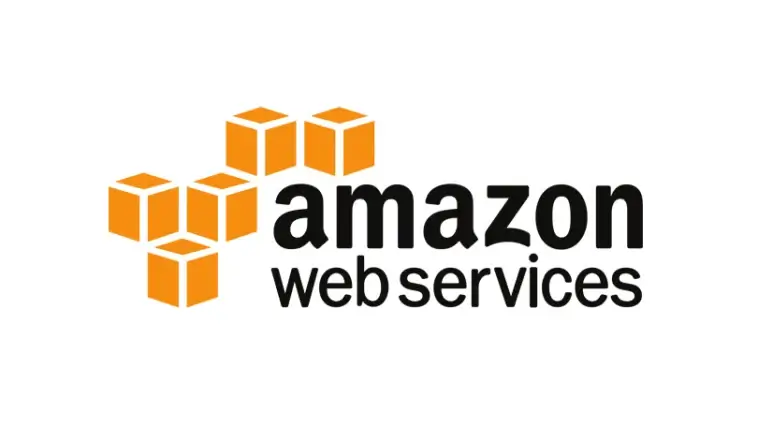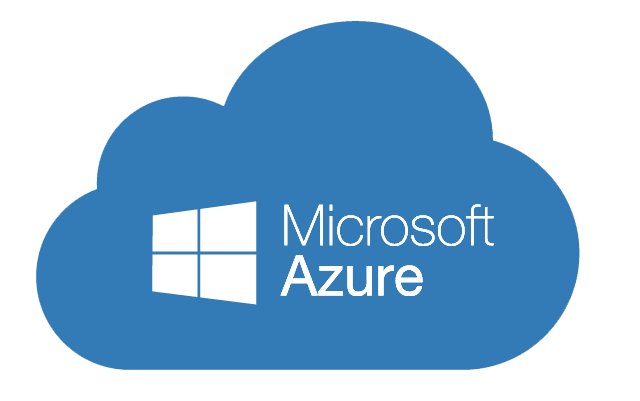Are you contemplating the shift to cloud computing? As businesses increasingly embrace the benefits of cloud technology, it’s crucial to make an informed decision when selecting a cloud provider (AWS vs Azure vs Google Cloud). With numerous options available, it can be overwhelming to determine the best fit for your specific needs.
But fear not! In this comprehensive blog post, we’ll delve into various cloud providers and assist you in identifying the ideal choice for your organization.
| Criteria | Amazon Web Services (AWS) | Microsoft Azure | Google Cloud Platform (GCP) |
| Pricing | Offers various pricing models and options, including pay-as-you-go and reserved instances. | Flexible pricing options, including pay-as-you-go and discounted reserved instances. | Offers pay-as-you-go pricing and committed use discounts. |
| Compute Services | Provides a wide range of compute services, including EC2, Lambda, and Elastic Beanstalk. | Offers compute services like Virtual Machines, App Service, and Azure Functions. | Provides compute services such as Compute Engine, App Engine, and Kubernetes Engine. |
| Storage Options | Provides various storage services, including S3, EBS, and Glacier. | Offers storage services like Blob Storage, File Storage, and Azure Disk Storage. | Provides storage services such as Cloud Storage, Cloud SQL, and Cloud Bigtable. |
| Machine Learning and AI Capabilities | Offers comprehensive AI and machine learning services with Amazon SageMaker, Rekognition, and more. | Provides AI and ML capabilities through services like Azure Machine Learning, Cognitive Services, and more. | Offers AI and ML services through Google Cloud AI, AutoML, and TensorFlow. |
| Database Services | Provides a wide range of database options, including Amazon RDS, DynamoDB, and Redshift. | Offers database services like Azure SQL Database, Cosmos DB, and Azure Database for MySQL. | Provides database services such as Cloud SQL, Firestore, and BigQuery. |
| Networking | Offers extensive networking capabilities, including Amazon VPC, Route 53, and CloudFront. | Provides networking services like Azure Virtual Network, Azure DNS, and Azure ExpressRoute. | Offers networking services such as Virtual Private Cloud (VPC), Cloud DNS, and Cloud Load Balancing. |
| Global Infrastructure | Operates in numerous regions worldwide with a large number of data centers. | Has an extensive global presence with data centers located in many regions. | Has a global network of data centers and regions to provide wide coverage. |
| Support | Provides extensive documentation, support forums, and options for technical support. | Offers comprehensive documentation, support options, and access to Azure support engineers. | Provides documentation, community support, and access to Google Cloud support resources. |
Pros and Cons: AWS vs Azure vs Google Cloud
Amazon Web Services (AWS)

Pros:
- Extensive Service Offering: AWS has a vast range of services, including compute, storage, databases, AI/ML, networking, and more, providing comprehensive solutions for various business needs.
- Market Leader: AWS is the leading cloud provider with a strong track record, extensive customer base, and a robust ecosystem of third-party integrations.
- Global Infrastructure: AWS has a vast global infrastructure with multiple data centers worldwide, allowing businesses to have low-latency access and meet data sovereignty requirements.
- Scalability and Flexibility: AWS offers auto-scaling features and flexible resource allocation, enabling businesses to easily scale up or down based on demand.
- Strong Security Measures: AWS provides a wide range of security tools, encryption options, and compliance certifications to ensure the protection of data and meet regulatory requirements.
Cons:
- Complex Pricing Structure: AWS pricing can be complex, especially when using a variety of services. Understanding the pricing models, estimating costs, and optimizing expenses may require careful planning and monitoring.
- Steep Learning Curve: AWS has a rich set of services and features, which can make it challenging for beginners to navigate and fully utilize the platform. Learning resources and training may be necessary for effective usage.
- Limited Support Options: While AWS provides documentation and support forums, some users have reported challenges with response times and the availability of personalized support.
Microsoft Azure

Pros:
- Seamless Integration with Microsoft Products: Azure offers seamless integration with popular Microsoft tools and technologies, making it attractive for businesses already using the Microsoft ecosystem.
- Hybrid Cloud Capabilities: Azure provides strong support for hybrid cloud scenarios, allowing businesses to seamlessly integrate on-premises infrastructure with the cloud.
- Wide Range of Services: Azure offers a comprehensive set of services, including compute, storage, databases, analytics, and more, catering to diverse business needs.
- Strong Enterprise Focus: Azure is well-suited for enterprise environments, with features like Active Directory integration, strong governance tools, and compliance certifications.
- Global Presence: Azure has a wide global presence with data centers located in various regions, enabling businesses to have a global reach and meet local compliance requirements.
Cons:
- Learning Curve for Non-Microsoft Users: Users not familiar with Microsoft technologies may face a learning curve when navigating Azure’s services and features.
- Some Services Still Maturing: While Azure offers a wide range of services, some may still be evolving and may not have the same maturity or feature set as those of AWS.
- Limited Marketplace Offerings: The Azure Marketplace may have a smaller selection of third-party solutions compared to AWS, although it continues to grow.
Google Cloud Platform (GCP)

Pros:
- Strong AI and ML Capabilities: GCP is known for its advanced AI and ML services, offering pre-trained models, custom machine learning, and data analytics capabilities.
- Cost-Effective Pricing: GCP’s pricing structure is known for its simplicity and cost-effectiveness, with competitive pricing options and sustained usage discounts.
- Scalable and Elastic Infrastructure: GCP provides flexible scaling options, allowing businesses to easily handle varying workloads and traffic spikes.
- Global Network and Performance: GCP offers a high-performance global network, enabling businesses to deliver applications and services with low latency.
- Developer-Friendly: GCP provides a range of developer tools and integration options, making it attractive for developers and DevOps teams.
Cons:
- Smaller Market Share: GCP currently has a smaller market share compared to AWS and Azure, which may result in a comparatively smaller ecosystem and fewer third-party integrations.
- Limited Enterprise Focus: GCP may be perceived as more focused on startups and developer-centric use cases, although it continues to expand its enterprise capabilities.
- Learning Curve for Non-Google Users: Users who are not familiar with Google’s technologies may need to invest time in learning and adapting to GCP’s platform and services.
? Unable to choose a cloud provider? Seek expert guidance from Gart. Our experienced team can help you navigate the complexities of cloud computing and select the optimal provider for your business.
How to Choose a Cloud Service Provider
Choosing a cloud service provider requires careful consideration of several factors. Here are the key steps to guide you in selecting the right cloud service provider for your business:
Define Your Business Requirements:
- Understand your business requirements and goals.
- Evaluate services, performance, and security measures.
- Consider global infrastructure and data centers.
- Assess integration capabilities and ease of migration.
- Evaluate disaster recovery options and pricing models.
- Seek feedback and conduct trials to make an informed choice.
To begin the process of selecting the right cloud service provider for your business, it is crucial to gain a deep understanding of your organization’s needs, objectives, and unique requirements in relation to cloud services. Take into account various factors, such as the types of workloads you handle, your storage and computing requirements, scalability expectations, compliance obligations, and any industry-specific regulations that apply.
Conduct a comprehensive workload analysis to assess the specific applications and workloads your business relies on. Consider the nature of these workloads, whether they involve web hosting, data analytics, AI/ML processing, e-commerce, or other operations. Identify the computing resources, storage needs, and network prerequisites associated with each workload.
This table provides a brief overview of the compute services offered by each cloud provider:
| Cloud Provider | Compute Services |
| AWS | Amazon EC2 (Elastic Compute Cloud) |
| AWS Lambda (Serverless Computing) | |
| Amazon ECS (Elastic Container Service) | |
| AWS Batch (Batch Computing) | |
| AWS Elastic Beanstalk (Platform-as-a-Service) | |
| Azure | Azure Virtual Machines |
| Azure Functions (Serverless Computing) | |
| Azure Container Instances | |
| Azure Batch (Batch Computing) | |
| Azure App Service (Platform-as-a-Service) | |
| GCP | Google Compute Engine |
| Google Cloud Functions (Serverless Computing) | |
| Google Kubernetes Engine (Managed Kubernetes) | |
| Google Cloud Run (Container Instances) | |
| Google App Engine (Platform-as-a-Service) |
Determine the scalability and flexibility your business demands. Evaluate whether you require the capability to quickly scale resources up or down in response to fluctuating demands. Consider whether potential cloud providers offer features like auto-scaling, elastic load balancing, and flexible resource allocation to meet your scalability requirements effectively.
Evaluate your data storage and database needs. Analyze the volume of data your business needs to store and process, as well as the specific data access patterns (real-time, batch processing) that are crucial to your operations. Consider the level of data durability, redundancy, and availability required. Assess the availability of different storage options (such as object storage or block storage) and the variety of database solutions (relational or NoSQL) offered by each cloud service provider.
Here’s a table comparing the database and storage services offered by AWS, Azure, and GCP
| Cloud Provider | Database Services | Storage Services |
| AWS | Amazon RDS (Relational Database Service) | Amazon S3 (Simple Storage Service) |
| Amazon DynamoDB (NoSQL Database) | Amazon EBS (Elastic Block Store) | |
| Amazon Aurora (Managed Relational Database) | Amazon Elastic File System (EFS) | |
| Amazon DocumentDB (MongoDB-compatible Document Database) | Amazon FSx (File Storage) | |
| Amazon Neptune (Graph Database) | Amazon Glacier (Long-term Archive Storage) | |
| Azure | Azure SQL Database | Azure Blob Storage |
| Azure Cosmos DB (NoSQL Database) | Azure Files (Managed File Storage) | |
| Azure Database for MySQL | Azure Disk Storage | |
| Azure Database for PostgreSQL | Azure Archive Storage (Long-term Archive Storage) | |
| Azure Synapse Analytics (Data Warehousing) | Azure Data Lake Storage | |
| GCP | Google Cloud SQL (Managed Relational Database Service) | Google Cloud Storage |
| Google Cloud Firestore (NoSQL Document Database) | Google Cloud Persistent Disk | |
| Google Cloud Spanner (Horizontally Scalable Relational Database) | Google Cloud Filestore | |
| Google Cloud Bigtable (Wide-column NoSQL Database) | Google Cloud Storage Nearline (Long-term Archive Storage) | |
| Google Cloud Datastore (NoSQL Database) | Google Cloud Archive Storage (Long-term Archive Storage) |
Assess the security and compliance features provided by each cloud service provider, especially if your business operates in an industry with specific regulatory requirements such as healthcare (HIPAA) or financial services (PCI DSS). Pay attention to aspects like data encryption, access controls, compliance certifications, and auditing capabilities offered by potential providers.
Take into account your business’s geographic presence and any data sovereignty obligations you may have. Determine whether the cloud provider has data centers located in regions that align with your operations or customer base. Ensure that the provider can meet local data residency requirements and provide low-latency access for optimal performance.
Evaluate the compatibility and integration capabilities of the cloud provider with your existing systems, applications, and IT infrastructure. Look for pre-built integrations, APIs, and software development kits (SDKs) that facilitate seamless connectivity and data exchange. Consider the ease of migrating your current applications and data to the platform of the cloud service provider under consideration.
Assess your disaster recovery and business continuity needs. Determine whether the cloud provider offers robust backup and disaster recovery solutions, including data replication across multiple regions, automated backup processes, and options for high availability and fault tolerance. These features are critical to ensure the uninterrupted operation of your business.
Consider your budget and cost expectations for cloud services. Evaluate the pricing models, cost structures, and billing options provided by each cloud service provider. Take into account factors such as compute and storage costs, data transfer fees, and potential discounts or cost optimization tools offered by the provider.
By conducting a thorough analysis and defining your business requirements across these dimensions, you will be better equipped to evaluate different cloud service providers and select the one that aligns most effectively with your organization’s needs, goals, and constraints.
Still undecided on the right cloud provider? Get in touch with us now and embark on your cloud transformation journey!
Consider Performance and Reliability
Performance and reliability are crucial for smooth operations. Evaluate the uptime guarantees and service level agreements (SLAs) provided by cloud providers. Look for low-latency connections, robust network infrastructure, and features like content delivery networks (CDNs) and load balancing that can enhance performance and improve user experience.
AWS Networking Services
- Amazon VPC (Virtual Private Cloud)
- Amazon CloudFront (Content Delivery Network)
- Amazon Route 53 (Domain Name System)
- AWS Direct Connect (Dedicated Network Connection)
- AWS Elastic Load Balancer (Application Load Balancer, Network Load Balancer)
Azure Networking Services
- Azure Virtual Network
- Azure CDN (Content Delivery Network)
- Azure DNS (Domain Name System)
- Azure ExpressRoute (Dedicated Network Connection)
- Azure Load Balancer (Application Gateway, Traffic Manager)
GCP Networking Services
- Google VPC (Virtual Private Cloud)
- Cloud CDN (Content Delivery Network)
- Cloud DNS (Domain Name System)
- Cloud Interconnect (Dedicated Network Connection)
- Load Balancing (HTTP/HTTPS, TCP/SSL)
Assess Security and Compliance
It is essential to carefully evaluate the security measures and certifications provided by each cloud provider. This evaluation should encompass considerations such as encryption options, access controls, identity and access management (IAM) capabilities, and the provider’s compliance with industry regulations that are relevant to your business. Ensuring that the chosen cloud provider meets your specific security and compliance requirements is crucial for safeguarding your data and maintaining regulatory compliance.
Review Pricing and Cost Structures
When reviewing the pricing and cost structures of various cloud providers, it is important to gain a comprehensive understanding of their pricing models, cost structures, and billing options. Evaluate key factors such as pay-as-you-go pricing, the availability of reserved instances, costs associated with data storage, and fees for data transfers. It is crucial to consider the total cost of ownership (TCO) over time and compare it with your budget and cost expectations. To effectively manage expenses, look for cost optimization tools and explore available options that can assist in optimizing and controlling your cloud-related costs. By conducting a thorough evaluation of pricing and cost structures, you can make informed decisions that align with your financial objectives while maximizing the value derived from your chosen cloud provider.
Read more: Azure Cost Optimization for a Software Development Company
This case study highlights how Gart assisted Appsurify.com, a software development and testing company, in optimizing their Microsoft Azure infrastructure costs. By conducting a thorough analysis of the client’s cloud infrastructure and identifying cost drivers, our team implemented strategic changes to reduce network costs by 90%. Additionally, the solution improved performance, security, and reliability while saving the client up to $400 per day in network and infrastructure expenses. The case study demonstrates the effectiveness of Azure cost optimization in achieving significant savings and enhancing overall infrastructure performance.
Consider Global Infrastructure and Data Centers
The proximity of data centers to your target audience can play a vital role in minimizing latency and ensuring optimal performance. Additionally, it is crucial to consider data sovereignty requirements and choose a provider that can comply with the regulations specific to the regions where you operate. Evaluating the cloud provider’s content delivery network (CDN) capabilities is also important, as it can enhance performance by delivering content efficiently to end users across various locations. By carefully considering global infrastructure and data center availability, you can ensure a seamless and responsive user experience while meeting regulatory obligations.
The three major cloud providers each have an extensive global presence:
Amazon Web Services (AWS) operates in 25 geographic regions, which are further divided into 81 availability zones. They have a vast network of 218+ edge locations and 12 Regional Edge Caches.
Microsoft Azure has a footprint in over 60 regions worldwide. Each region is equipped with a minimum of three availability zones, ensuring high availability. Additionally, they have established more than 116 edge locations, also known as Points of Presence (PoPs).
Google Cloud Platform (GCP) is available in 27 cloud regions, and within these regions, there are a total of 82 zones. GCP further extends its network reach through 146 edge locations across the globe.
Evaluate Support and Documentation
Consider the level of support and customer service provided by each cloud provider. Look for availability of support channels, response times, and the quality of documentation, tutorials, and knowledge base resources. A responsive and knowledgeable support team can be crucial in resolving issues promptly.
Consider Vendor Lock-in and Portability
Assess the level of vendor lock-in associated with each provider. Evaluate the ease of migrating to and from the cloud provider, as well as the compatibility and portability of your applications and data. Consider strategies to mitigate vendor lock-in risks and ensure future flexibility.
Seek Feedback and References
Look for feedback from other businesses or industry peers who have experience with the cloud providers you are considering. Research case studies and success stories to understand how well the providers have supported similar organizations in achieving their goals.
Conduct Proof-of-Concept (PoC) or Trial Periods
Before making a final decision, consider conducting a proof-of-concept or taking advantage of trial periods offered by cloud providers. This allows you to test the provider’s services, performance, and compatibility with your applications and workloads before committing fully.
By following these steps and thoroughly evaluating each cloud service provider based on your specific business requirements, you can make an informed decision and choose the cloud service provider that best fits your needs and goals.
Don’t let the cloud provider decision overwhelm you. Gart is here to help.
Exploring Other Cloud Providers: Beyond AWS, Azure, and GCP
In addition to AWS vs Azure vs Google Cloud, there are several other notable cloud providers in the market. Here are a few examples:
IBM Cloud
IBM’s cloud platform that offers a range of services including compute, storage, AI, and blockchain. It emphasizes enterprise-grade security and hybrid cloud capabilities.
Oracle Cloud
Oracle’s cloud platform provides services for infrastructure, databases, applications, AI, and data analytics. It focuses on integrating with existing Oracle software and technologies.
Alibaba Cloud
Alibaba’s cloud platform offers a comprehensive suite of cloud services, including compute, storage, networking, AI, and big data analytics. It has a strong presence in the Asia-Pacific region.
DigitalOcean
DigitalOcean is a developer-focused cloud provider that specializes in providing simple and cost-effective infrastructure services such as virtual machines, storage, and Kubernetes clusters.
Vultr
Vultr is a cloud provider known for its high-performance and affordable infrastructure services. It offers scalable compute, storage, and networking resources across multiple data centers worldwide.
Rackspace
Rackspace provides managed cloud services and expertise across various cloud platforms, including AWS, Azure, and GCP. It offers support, migration, and optimization services to help businesses leverage the benefits of the cloud.
Salesforce Cloud
Salesforce offers a suite of cloud-based applications for customer relationship management (CRM), sales, marketing, and service management. Its platform-as-a-service (PaaS), known as Salesforce Platform, allows businesses to build and deploy custom applications.
Tencent Cloud
Tencent Cloud is a leading cloud provider in China, offering a wide range of cloud services including computing, storage, databases, AI, and IoT. It focuses on serving businesses in the Chinese market.
OVHcloud
OVHcloud is a European cloud provider offering a broad portfolio of services, including virtual private servers, dedicated servers, storage, and network solutions. It emphasizes data privacy and compliance with European regulations.
Hetzner Cloud
Hetzner Cloud is a German cloud provider offering a range of infrastructure services, including virtual machines, storage, and networking. It is known for its competitive pricing and reliable performance.
Conclusion: AWS vs Azure vs Google Cloud
When comparing AWS vs Azure vs Google Cloud, it’s clear that each cloud provider offers a robust set of services and features. AWS excels in its expansive service offerings and market dominance. Azure stands out with its seamless integration with Microsoft technologies and comprehensive enterprise solutions. Google Cloud impresses with its cutting-edge technology and strong focus on data analytics and machine learning. Ultimately, the right choice depends on your specific business requirements, budget, and preferences. We hope that our assistance has been valuable in guiding you on how to choose a cloud provider.
See how we can help to overcome your challenges









